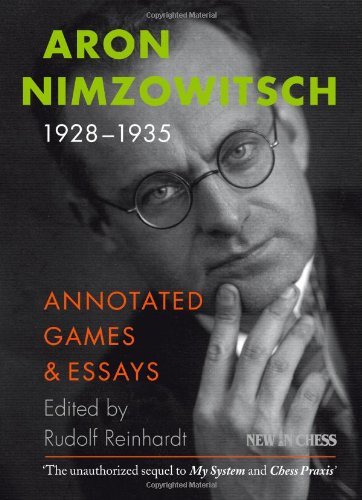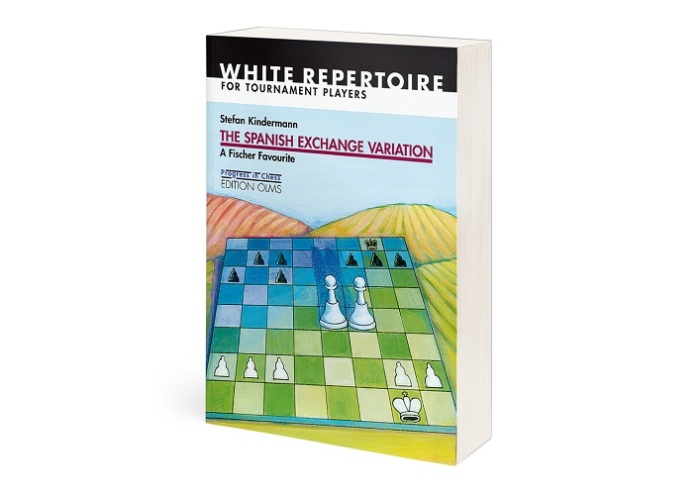Posts Tagged ‘Lasker’
Aron Nimzowitsch, 1928-1935: Annotated Games & Essays
Aron Nimzowitsch, 1928-1935: Annotated Games & Essays
Edited by Rudolf Reinhardt
New In Chess, 2013
ISBN: 9789056914165
A significant contribution to our understanding of Nimzowitsch’s chess thought.
Great gratitude must go to the late Rudolf Reinhardt, a chess historian who has diligently researched, compiled, and edited Nimzowitsch’s writings from the latter period of his life.
It was a period that saw what was probably his greatest sporting achievement, outright victory in the tournament played at Carlsbad in 1929, coming out ahead of Capablanca, Spielmann and Rubinstein. Nimzowitsch was clearly Capablanca’s equal at this time (they drew four times) but Alekhine posed a considerable problem for both him (he suffered four losses here) and his contemporaries. Alekhine was in a different class altogether.
The book contains pretty much all the games Nimzowitsch played in the principal tournaments of the period (Bad Kissingen 1928, Carlsbad 1929, San Remo 1930, Bled1931, Zurich 1934), some games from minor tournaments and from Nimzowitsch’s matches with Stahlberg and Stoltz and, finally, some training games and games played in simultaneous displays. Most games are annotated by Nimzowitsch himself.
Amongst the essays and articles are tributes to Chigorin and Lasker. Other articles touch on topics that are still of great general interest: strategy, psychology, aesthetics, playing style, practical play and preparation for competition. There is a comparison of amateur and professional approaches to chess, not always to the benefit of the latter.
One could regard this book as a sequel to My System and Chess Praxis, as the cover blurb asserts, and as a companion volume to Per Skjoldager and Jorn Erik Nielsen’s Aron Nimzowitsch: On the Road to Chess Mastery, 1886-1924, which covered his early life and career. Either way, it is chockfull of wonderful chess and is a significant contribution to our understanding of Nimzowitsch’s thought. His personality shines through in both the articles and the annotations, and his profundity is everywhere apparent.
Aron Nimzowitsch, 1928-1935: Annotated Games & Essays
Aron Nimzowitsch, 1928-1935: Annotated Games & Essays
Edited by Rudolf Reinhardt
New In Chess, 2013
ISBN: 9789056914165
A significant contribution to our understanding of Nimzowitsch’s chess thought.
Great gratitude must go to the late Rudolf Reinhardt, a chess historian who has diligently researched, compiled, and edited Nimzowitsch’s writings from the latter period of his life.
It was a period that saw what was probably his greatest sporting achievement, outright victory in the tournament played at Carlsbad in 1929, coming out ahead of Capablanca, Spielmann and Rubinstein. Nimzowitsch was clearly Capablanca’s equal at this time (they drew four times) but Alekhine posed a considerable problem for both him (he suffered four losses here) and his contemporaries. Alekhine was in a different class altogether.
The book contains pretty much all the games Nimzowitsch played in the principal tournaments of the period (Bad Kissingen 1928, Carlsbad 1929, San Remo 1930, Bled1931, Zurich 1934), some games from minor tournaments and from Nimzowitsch’s matches with Stahlberg and Stoltz and, finally, some training games and games played in simultaneous displays. Most games are annotated by Nimzowitsch himself.
Amongst the essays and articles are tributes to Chigorin and Lasker. Other articles touch on topics that are still of great general interest: strategy, psychology, aesthetics, playing style, practical play and preparation for competition. There is a comparison of amateur and professional approaches to chess, not always to the benefit of the latter.
One could regard this book as a sequel to My System and Chess Praxis, as the cover blurb asserts, and as a companion volume to Per Skjoldager and Jorn Erik Nielsen’s Aron Nimzowitsch: On the Road to Chess Mastery, 1886-1924, which covered his early life and career. Either way, it is chockfull of wonderful chess and is a significant contribution to our understanding of Nimzowitsch’s thought. His personality shines through in both the articles and the annotations, and his profundity is everywhere apparent.

